
| Publisher: | Random House | |
| Genre: | Satire, Literary, Political, Fiction | |
| ISBN: | 9780399592805 | |
| Pub Date: | September 2017 | |
| Price: | $28.99 |
| Fiction |
by Salman Rushdie
Salman Rushdie (The Satanic Verses) is a writer who takes the spirit of the age and splays it in a million dazzling ways. In his novel The Golden House, the zeitgeist is terrifyingly familiar. Americans, their bigotries, their horrors, as well as their aspirations and humanity, are deconstructed and reconstructed in this grand and sweeping tragedy. The narrator, René, is an aspiring filmmaker who theorizes on history, art, cinema, literature and the nature of the auteur. In a modern nod to The Great Gatsby, René relays the story of his neighbor Nero Golden, an Indian immigrant and widower with a mysterious past and ostentatious amount of wealth. René earns the man's trust, befriends his three sons--Petya, Apu and D--but becomes dangerously entangled in family affairs when Nero's new wife, Vasilisa, makes an offer he can't refuse.
Throughout the novel, René is making a probing film about the Golden family. At the heart of his endeavor is the question of identity, particularly American identity. Nero Golden builds a new persona for himself in the U.S., but his past life and business dealings with the criminal underground in India catch up to him in a series of tragic reckonings. His story unfolds against the 2016 presidential election, which Rushdie satirizes to devastating effect.
The closest Rushdie gets to answering questions of identity--of reality versus caricature--is a refreshing humanism found in the story's final moments. "Humanity was the only answer to the cartoon," René surmises. "I had no plan except love." The Golden House is a literary and philosophical tour de force. It is a new classic born of troubled times. --Scott Neuffer, writer, poet, editor of trampset
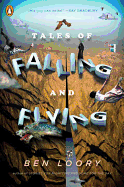
| Publisher: | Penguin | |
| Genre: | Short Stories (single author), Fairy Tales, Folk Tales, Legends & Mythology, Literary, Fiction | |
| ISBN: | 9780143130109 | |
| Pub Date: | September 2017 | |
| Price: | $17 |
| Fiction |
by Ben Loory
Ben Loory (Stories for Nighttime and Some for the Day and picture book The Baseball Player and the Walrus) is a whimsical fabulist, with an occasional dark streak. His stories are quite short; his second collection, Tales of Falling and Flying, includes 39 stories arranged in a triptych of 13 each, plus a tribute to Elmore Leonard. In typical Loory ("rhymes with story") fashion, the approach to the tribute comes in low and sideways, with a spin.
His stories often feature loss, dissociation, dreams of death, the agony of not being seen. In "The Dodo," one dies but gets back up, running around insisting he's a dodo but is ignored, until he makes a stand for his true self. One of the sweetest stories is "The Sloth": the creature decides to get a job, and after being turned down by various animals, heads into the city. He tries so hard, "but the fact was, he was just very slow." His solution is both practical and delightful.
Old age and regret is succinctly summed up in "The Candelabra"; a man begins to lose parts of his body in "Missing" until he becomes pure spirit in search of himself; in "Zombies," finally, the undead are seen as the idiots they are; "The Squid Who Fell in Love with the Sun" (and longs to reach it) is magical.
Ben Loory's stories can be poignant, lyrical, witty or puzzling--sometimes all in the same tale. Whatever they are, they're strange and strangely moving. --Marilyn Dahl
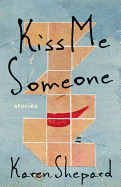
| Publisher: | Tin House Books | |
| Genre: | Contemporary Women, Short Stories (single author), Family Life, Asian American, Fiction | |
| ISBN: | 9781941040751 | |
| Pub Date: | September 2017 | |
| Price: | $19.95 |
| Fiction |
by Karen Shepard
In Karen Shepard's short story collection Kiss Me Someone, characters stabilize and combust, rage and love, display gentility and brutality--revealing the dichotomies of identity.
Focusing on young women and individuals of mixed race, Shepard's stories delve into the lives of those who feel most vulnerable and analyze their unconscious, impassioned acts of strength. Through time, geographic space and cultural identity, Shepard's heroines echo each other's frustrations and desires as they proclaim the importance of individual experience. The protagonist of "Jerks" summarizes this paradoxical connection best when she acknowledges that being alone "may have been the perfect punishment, the ultimate self-indulgence, the thing I loved the most."
In the tradition of Susan Minot and Rebecca Lee, Shepard's writing is breathtaking in its ability to capture minor but revelatory personal insights. With her crisp prose and sharp observations, she views characters with devastating and unflinching clarity. And while the conflicts can sometimes seem extreme, Shepard deftly avoids ever delving into melodrama. In fact, throughout the collection, the simple act of recognizing and declaring one's feelings serves as both castigation and absolution, an act of violence and grace. Most empowering, there is a certain challenge in Shepard's assertion of the individual, exposed woman, best captured by the mantra of her second-person perspective in "Popular Girls": "We're loved. We're protected. Do with us what you dare. Do with us what you can." --Alice Martin, freelance writer and editor
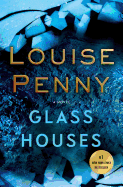
| Publisher: | Minotaur Books | |
| Genre: | Mystery & Detective, Traditional, Fiction | |
| ISBN: | 9781250066190 | |
| Pub Date: | August 2017 | |
| Price: | $28.99 |
| Mystery & Thriller |
by Louise Penny
Louise Penny's fans will not be disappointed by Glass Houses, the 13th entry in her Armand Gamache mystery series. With compelling back-and-forth plotting and only a few casual references to the previous books, including 2016's A Great Reckoning, Glass Houses reads almost as a standalone.
As the novel opens, Gamache, the newly appointed head of Quebec's Sûreté, is testifying in a murder trial on a blisteringly hot July day. The reader is kept unaware of the victim's and the defendant's identities, as Gamache slowly unfolds the events that led to a death in Three Pines, the village where he resides. Then the story flashes back to the previous November, when residents of Three Pines are shocked by the presence of a figure in black who stands menacingly on the village green.
Penny's poetic style of writing and her deeply realized characters, with their mix of flaws and heroism, make her novels irresistible. In Glass Houses, the taut, woven plotlines show Gamache, his second-in-command, Jean-Guy Beauvoir, and many other characters at their best and worst.
In the words of Mahatma Gandhi that will come to haunt Gamache during the course of this investigation, "There is a higher court than the courts of justice and that is the court of conscience." Penny delicately explores the tension of an officer who may be sworn to uphold the law, but who feels compelled to do something else, in a fascinating novel that is sure to appeal to a variety of readers--whether they typically enjoy mysteries or not. --Jessica Howard, bookseller at Bookmans
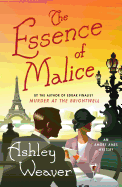
| Publisher: | Minotaur Books | |
| Genre: | Mystery & Detective, Amateur Sleuth, Cozy, Fiction, Historical, Women Sleuths | |
| ISBN: | 9781250060464 | |
| Pub Date: | September 2017 | |
| Price: | $24.99 |
| Mystery & Thriller |
by Ashley Weaver
After weathering a turbulent period in her marriage, British socialite Amory Ames is enjoying a peaceful holiday with her husband, Milo, on Italy's Lake Como. Despite Milo's penchant for death-defying activities (such as piloting a seaplane), all is well in the Ameses' world, until a cryptic letter from his former nanny, Madame Nanette, summons the couple to Paris. There, the two must use their wit and charm to investigate the mysterious death of Madame Nanette's employer, Helios Belanger, a wealthy parfumier with many enemies. Ashley Weaver blends the worlds of perfume, Parisian society and (potential) murder in another Amory Ames mystery, The Essence of Malice.
Keen-eyed and strong-willed, though surprisingly vulnerable where Milo is concerned, Amory again proves herself a capable amateur sleuth, gaining entrée to the Belanger family's good graces by requesting an expensive custom scent. Meanwhile, Milo uses his native charm and the knowledge gleaned from his bad-boy past to investigate a few unsavory connections to the case. Amory and Milo spend much of the novel pursuing leads at cross purposes, but their insights benefit one another when shared. The tangled relationships of the Belanger family and the return of appealing minor characters such as Amory's flighty maid, Winnelda, add dimension to the novel, and the ending may surprise even seasoned mystery readers.
With top notes of dry wit, a solidly plotted base and a subtle but rich portrayal of a complicated marriage, Amory's fourth adventure is as satisfying as her bespoke Belanger scent. --Katie Noah Gibson, blogger at Cakes, Tea and Dreams
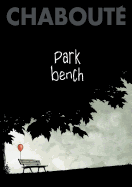
| Publisher: | Gallery 13 | |
| Genre: | Literary, Comics & Graphic Novels | |
| ISBN: | 9781501154027 | |
| Pub Date: | September 2017 | |
| Price: | $25 |
| Graphic Books |
by Christophe Chabouté
Moby-Dick and Alone introduced English-language audiences to award-winning artist Christopher Chabouté's striking black-and-white illustrations. Park Bench builds upon the artist's distinctive storytelling depth as he depicts a community through the seasonal comings and goings that take place around a solitary bench.
The graphic novel opens with two youngsters carving "I ♥ u" into the wood, which sets the scene around how individual groups in the community use, abuse, ignore and partake of this one object. There is the dog marking his territory on the same corner of the bench, an elderly couple who sit and share a treat, a skateboarder who uses it as a ramp, the homeless man seeking respite every night and getting shooed away by an annoyed patrolman, and the maintenance worker charged with the bench's upkeep. A man who passes it on his daily trek to work eventually takes a moment to sit down, take off his shoes and enjoy the views unfolding before him. Through the passage of time the bench, and this particular scene, comes to symbolize love lost and found, desire and pain, happiness and suffering.
Chabouté's artistic prowess lies in the details. In the space of three to six panels per page, he portrays the slices of life he observes in that singular, wordless scene, adding power and philosophical depth evoked through black-and-white illustrations. Where Alone was a case study on how imagination sustains the soul, Park Bench emerges to represent a pantheistic everyone's story, where each page explores a moment in time that will at once be recognizable and familiar. --Nancy Powell, freelance writer and technical consultant

| Publisher: | Crown Archetype | |
| Genre: | Biography & Autobiography, Music, Composers & Musicians, General, Entertainment & Performing Arts, Artists, Architects, Photographers, Individual Composer & Musician | |
| ISBN: | 9780451497833 | |
| Pub Date: | September 2017 | |
| Price: | $28 |
| Starred | Biography & Memoir |
by Dylan Jones
David Bowie lived many lives. Born David Jones and enamored of fame, he assumed the name of a knife renowned for its cutting edge. Then came Ziggy Stardust, Aladdin Sane, Halloween Jack, the Thin White Duke. Each new incarnation sent fans running back to their bureaus to change. A shape-shifter baptized in new trends at every turn, he followed his fascinations with remarkable doggedness. His pursuits, though, regularly benefited from the people who surrounded him--early mentor Lindsay Kemp, eccentric first wife Angie, relentless manager Tony Defries, longtime collaborator Tony Visconti, protégé Iggy Pop and, especially, Bowie's schizophrenic older brother, Terry, who introduced him to jazz.
Those who knew the artist best are among the many included in British GQ editor Dylan Jones's (no relation) kaleidoscopic oral history, David Bowie: A Life. Jones seldom interjects amidst the fascinating monologues. After a touching introduction, he smartly steps back and lets others do the talking. Their stories are clever, funny, inspiring, heartbreaking and cautionary. Many marvel at the monumental effect supermodel Iman, his second wife, had. Understandably, the bulk of the biography gravitates to the '70s, the artist's wildest era. As the Berlin period of the late decade transitions to his acting in the '80s and his art collecting in the '90s, the music takes a backseat--until 2013's muscular comeback, The Next Day.
There is always more to say about Bowie, not all of it glowing. He was a flawed man who exuded cool. Dylan Jones has crafted an irresistible pastiche of his life, conversations that form a glittering constellation outline of the Starman. --Dave Wheeler, associate editor, Shelf Awareness
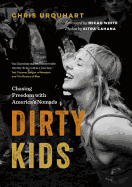
| Publisher: | Greystone Books | |
| Genre: | Travel, Adventure, United States, Anthropology, General, Cultural & Social, Essays & Travelogues, Special Interest, Social Science | |
| ISBN: | 9781771643047 | |
| Pub Date: | September 2017 | |
| Price: | $16.95 |
| Social Science |
by Chris Urquhart
Sixty years after the publication of Jack Kerouac's On the Road, Canadian journalist Chris Urquhart explores America's underground tramp culture in her compelling memoir Dirty Kids: Chasing Freedom with America's Nomads.
The memoir starts as a freelance assignment. In 2009, Urquhart writes an article in the Italian magazine Colors about a gathering of "Rainbows" in New Mexico. In Rainbowland, as the festival is called, she discovers a vibrant subculture of traveling hippies as well as "homeless folks, crusty punks, and inner-city youth who come for the sense of community." Nomadic, anti-consumerist and mystic, the Rainbows inspire Urquhart to immerse herself in similar subcultures for the next three years. She attends Burning Man in the Nevada desert. She visits the House of Ill Repute, "a rotted, sagging structure, an itching punk house sunk in the outskirts of Ann Arbor, Michigan." She connects with Rainbows all over the United States.
Urquhart writes of her adventures with a clear style and a keen journalistic eye. As much as she finds a sense of belonging with the underground, she resists romanticizing it. She reports the mental health issues, the drug abuse and sporadic violence that plague many of the scenes she visits. At the same time, she does uncover an ethos of freedom and resilience born of "the blazing wildness" of living outside the mainstream. After three years on the road, reintegrating into a sedentary life, Urquhart concludes that her travels have taught her how to be "fully present--profoundly present." "Anyone, and everyone, can become family," she writes. "I do not overlook how important Rainbowland is in holding this space of possibility."
With a thoughtful foreword by Micah White, co-creator of Occupy Wall Street, Dirty Kids is an enlightening and entertaining read. --Scott Neuffer, writer, poet, editor of trampset

| Publisher: | Bloomsbury Academic | |
| Genre: | Industries, Media Studies, Literary Criticism, Business & Economics, Aesthetics, Retailing, Semiotics & Theory, Social Science, Philosophy | |
| ISBN: | 9781501314827 | |
| Pub Date: | September 2017 | |
| Price: | $14.95 |
| Essays & Criticism |
by Matthew Newton
Part of Bloomsbury's Object Lessons series, which highlights the ordinary objects and structures in modern life, Shopping Mall is both history of and paean to the once-ubiquitous American shopping centers. Essayist Matthew Newton combines his fond memories of his local mall, outside Pittsburgh, with anecdotes about the first one built in the United States, the Mall of America and others, using the specific to pull out the larger story of late-20th-century suburban commercialism that these edifices represent.
Renowned Austrian architect Victor Gruen designed the first shopping mall, hoping to emulate the feeling of the bustling city squares in his hometown of Vienna. That Gruen would publicly disavow shopping malls two decades after he built the first one is a testament to how their structures were bent toward the simple functions of materialism, not the community spaces that he had envisioned. Shopping Mall doesn't track much of the metamorphosis between Gruen's plans and the modern iteration, assuming readers can fill in the blanks as to why the architect's utopian vision was ultimately undercut. But, interestingly enough, Newton doesn't entirely agree with Gruen, either. His own experience of the mall gives proof to its importance in community life, both good and bad, and he elucidates this importance through stories of his childhood and retrospectives on how malls are used today. That perspective gives Shopping Mall a much-needed position beyond "malls are perversions of community life through capitalism." He isn't interested in defending shopping malls, but in showing how his--and many other people's--lives would be entirely different without them. --Noah Cruickshank, adult engagement manager, the Field Museum, Chicago, Ill.

| Publisher: | Mariner Books | |
| Genre: | Inspirational & Religious, American, Love & Erotica, Death, Grief, Loss, Social History, Black Studies (Global), Poetry, Subjects & Themes, History, Social Science, African American, Places | |
| ISBN: | 9781328715548 | |
| Pub Date: | September 2017 | |
| Price: | $15.99 |
| Starred | Poetry |
by Marcus Wicker
Ruth Lilly Fellow and Pushcart Prize-winning poet Marcus Wicker (Maybe the Saddest Thing) is influenced by the hip-hop of Kendrick Lamar, A Tribe Called Quest and DC's MC Oddisee. Their sounds and rhythms kick along beneath the poems in Silencer, underscoring the collection's broad look at the continuing challenges of being a black man in the United States. He muses on life in academia: "Pretend/ as if I'm one of the gang, given over to rigorously lazy readings/ of Foucault, Foster Wallace." And on Midwest suburbia: "chemical lawns, tender-/ skinned children, its Uzi sprinkler heads...? Flame Buicks & midlife crisis sports bikes." But Wicker can't escape race and racism, and he finds trouble on the Internet: "an endless intangible/ stumbling ground of false deities,/ dogma & loneliness, sad as a pile of shit/ in a world without flies."
If these poems are often cool and conversational, they are also combative and political. In one of the strongest, "Watch Us Elocute," the narrator notes: "yesterday,/ some simple American citizen--throwback/ supremacist Straight Outta Birmingham, 1963--/ aimed his .45 & emptied the life from nine/ black believers at an AME church in Charleston." His lines bear a disciplined cadence and form, and the hip-hop influence drives Silencer's startling and unsettling power. Wicker covers it all in the conclusion to the bling poem "Blue Faces, after Kendrick Lamar": "Cashier holding my twenty up to the light to see if it's real money. Like I'd be shopping at Wal-Mart if I could counterfeit money." These are in-your-face poems that also make you want to bounce. --Bruce Jacobs, founding partner, Watermark Books & Cafe, Wichita, Kan.
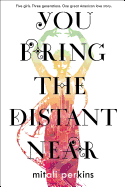
| Publisher: | Farrar, Straus & Giroux | |
| Genre: | Humorous, Emigration & Immigration, Family, General, Social Themes, Young Adult Fiction, Multigenerational | |
| ISBN: | 9780374304904 | |
| Pub Date: | September 2017 | |
| Price: | $17.99 |
| Starred | Children's & Young Adult |
by Mitali Perkins
Taking readers across four continents, Mitali Perkins (Tiger Boy) celebrates the dazzling beauty of diversity in culture, behavior and thought. More than the story of the Das family through three generations of women, Perkins relates the power of their souls.
Sonia and Tara were born in India, spent most of their childhoods in London and moved to New York City as teenagers. Tara is beautiful, a natural flirt and loves acting, while Sonia is a feminist, reads voraciously and excels in school. The girls' mother, Ranee, holds steadfast to her Bengali traditions though she has no desire to return to India. When Sonia meets the love of her life, only to have Ranee denounce their relationship, mother and daughter become estranged.
Time has a way of healing even the deepest of wounds, and so the Das family reshapes itself through the scars of the past and the promises of the future, which prominently include Sonia's daughter Chantal and Tara's daughter Anna. Three generations, five women and a panoply of talent, beauty, accomplishments and values, the Das family embodies the proudly determined and independent spirit of immigrants forging their way in a new land and exhibits the universal qualities of family. As Sonia's husband points out to Ranee, "Hyphens, for better or worse, are everywhere now. And the good ole U.S.A. makes space for lots of identities."
With wisdom and wit, You Bring the Distant Near illustrates the beauty in diversity. Perkins's striking imagery and deep, heartfelt insights illuminate the darkest corners of ignorance, providing a bright path to understanding and embracing differences in all their many splendors. --Jen Forbus, freelancer

| Publisher: | Putnam | |
| Genre: | Emotions & Feelings, People & Places, General, Lifestyles, Social Themes, City & Town Life, Juvenile Fiction | |
| ISBN: | 9781524739058 | |
| Pub Date: | September 2017 | |
| Price: | $17.99 |
| Children's & Young Adult |
by Holly M. McGhee, illust. by Pascal Lemaître
A little girl, unnamed, is frightened by relentless news stories of "anger and hatred--People against people." She asks first her father (whose skin is white), then her mother (whose skin is brown), what she can do "to make the world a better place." Both parents wisely avoid lectures or pie-in-the-sky schemes, instead inviting their daughter to "come with me" on regular, everyday outings where they encounter a diverse collection of people "because one person doesn't represent a family or a race or the people of a land." The girl's papa tips his baseball hat to the people he meets, so the little girl does, too. The mama takes her to a busy multicultural market for their groceries. And at the end of the day, when the girl asks to walk the dog by herself, "[h]er parents looked at each other, and they looked at their child. They let her go, and sent a message to the world. They would not live in fear."
For adults who worry about how to keep the ugliness of daily news from seeping into the younger generation's spirits, yet also hope to instill them with a sense of responsibility to their world, there is no better place to start than Come with Me. Holly M. McGhee (Matilda, Bright & Tender) writes a parable about a family pushing back against powerlessness with bravery and friendship. Pascal Lemaître's (Do Not Open This Book!) ink and watercolor artwork is spare and affecting, capturing the sincere, kind expressions of the people in the girl's neighborhood. A balm for sore souls. --Emilie Coulter, freelance writer and editor

| Publisher: | Margaret K. McElderry/S&S | |
| Genre: | Art, Dark Fantasy, Fantasy, Romance, Young Adult Fiction, Paranormal | |
| ISBN: | 9781481497589 | |
| Pub Date: | September 2017 | |
| Price: | $17.99 |
| Children's & Young Adult |
by Margaret Rogerson
Seventeen-year-old Isobel lives in the town of Whimsy with her Aunt Emma and her two younger sisters. Unruly and ill-mannered, March and May aren't Isobel's blood relations--"[t]hey'd begun life as a pair of goat kids before a fair one had too much wine and enchanted them on a lark." Now, they are members of Isobel and Emma's patchwork family; Emma became Isobel's guardian after a fairy beast brutally killed Isobel's parents.
As Whimsy's physician, Emma maintains a stable home for the three girls and Isobel adds fair folk enchantments to the family's fortunes by using her Craft: portraiture. Craft is, quite simply, the ability to make something, be it clothing, art or even food. The humans of Whimsy "could transmute substances as easily as [they] breathed, but for fair folk, such creation did not exist." In fact, "it is so contrary to their nature it had the power to destroy them." But the fair folk covet human Craft, and Isobel, as Whimsy's best portrait artist, has no shortage of magical patrons. When Rook, the autumn prince, returns to Whimsy for the first time in hundreds of years, he commissions a work. Isobel paints him as she sees him--with deep sadness in his eyes--not truly understanding that the other fair folk will see this human emotion as weakness. The autumn court moves to strip Rook of his crown and, desperate to save himself, Rook drags Isobel to the autumnlands to "stand trial" for her crime.
As the two run from the Wild Hunt, fairy beasts and the house of winter, it becomes clear that more is amiss than the painting; something is rotten in Rook's homeland. An Enchantment of Ravens offers a beautifully built world and swiftly paced adventure with exactly the right amount of danger, heroics and romance. --Siân Gaetano, children's and YA editor, Shelf Awareness